The best average finish across the last four races in the IndyCar Series doesn't belong to Alex Palou, Kyle Kirkwood or even Pato O'Ward.
It belongs to AJ Foyt Racing's Santino Ferrucci.
Across its two cars it took six races for the Foyt team to bag even a top-10 - but once it did, Ferrucci's managed fifth, second, fifth and third at the Indianapolis 500, Detroit, Gateway and Road America respectively.
One of the key things that has changed in this period is Ferrucci has a new race engineer: Adam Kolesar.
"A little bit weird to have an engineering switch in the middle of the season, but we went fifth, second, fifth, third, so I'd say it's going pretty good!" said Ferrucci after the Road America race.
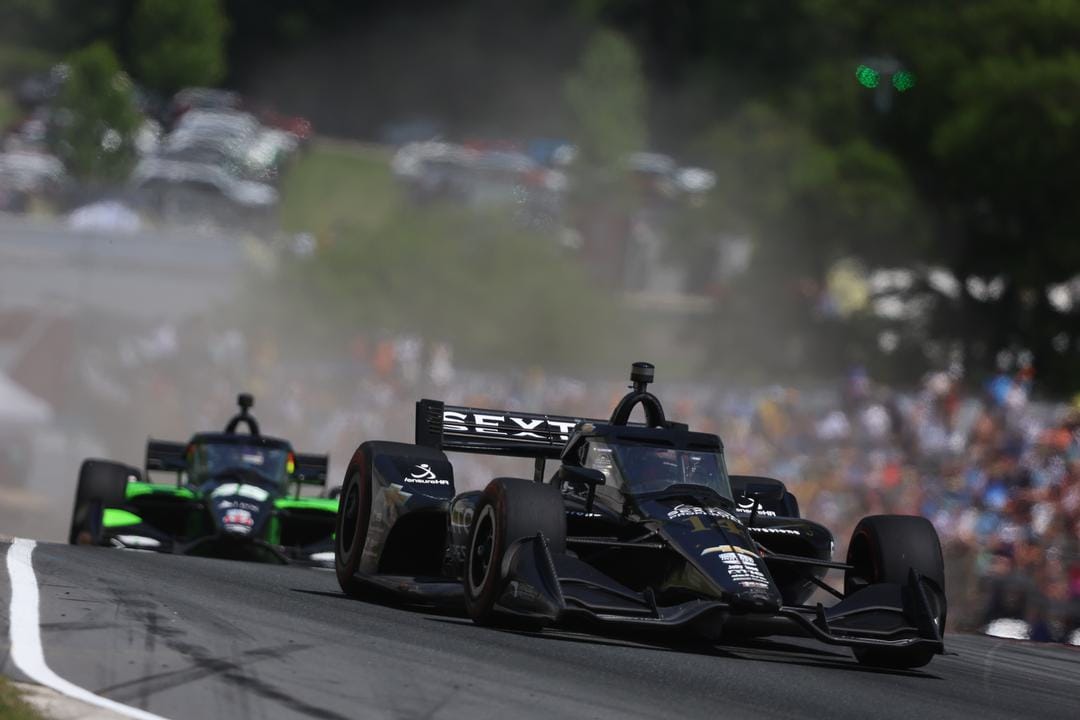
Kolesar started in IndyCar in 2011 at Newman Haas, then did 11 years at Rahal Letterman Lanigan as a mechanic, data acquisition engineer and then performance engineer, a role he took at Foyt in October 2023 with the noted long-term goal of becoming a fully-fledged IndyCar engineer.
Now that he is, The Race puts it to him that the run the team has been on is pretty incredible, and he immediately focuses on the things he wants to improve once the pleasantries are out of the way!
"It's been really good," he says. "Obviously, we need to work on qualifying a little bit, but it hasn't been for a lack of pace either, which is a little bit difficult to deal with.
"By the time the race comes, you have a very fast race car. We've worked with Santino to build a base of set-ups that we're very, very confident in. It hurts a little bit, from an engineering perspective, to not be able to throw it up at the top of the charts, and have to make Santino kind of drive through the field with that car instead."
It's true - that 3.75 average finish has been backed up by an average start of 18.25! To be achieving those results in this field from those starting positions is absolutely incredible. What's more, that's over a range of four tracks that couldn't be any more different than the other. A superspeedway, a short oval, a street course and a road course.
Plus, Ferrucci's team-mate David Malukas has an average start of fifth in that same run of four races, so the team can do it. Malukas' average finish in that window is 8.75.
Clearly, you need a good car working well to achieve these results - as well as good strategy and the opportunity to overtake, but Kolesar also has a unique insight into the driver that's delivering them.
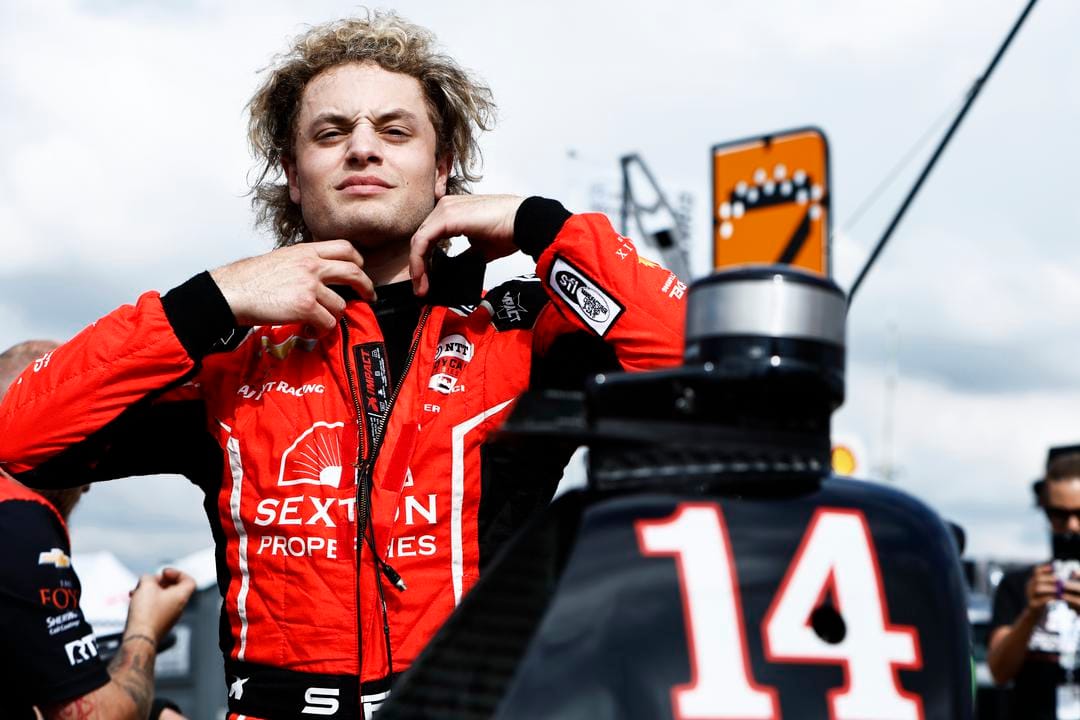
"Over the last two years, we've worked very closely together, it's been very good," he says.
"His racecraft is really second to none, in my opinion. There's been some aggression in practice situations and stuff like that that we're not necessarily super proud of.
"But the actual racecraft, if you look at some of the moves, they tend to be about as aggressive as you can make them without them being anywhere close to dirty. And I think he's matured a lot over the last couple of years.
"He's found a way to kind of keep the aggression that he's always had, but manage it now. I think that's kind of why he's so strong."
When you think of Ferrucci and his style - at least in the way he and others talk about how he likes the car, he's a gunslinging, tail-wagging kind of guy, driving it more like a rally car than an IndyCar.
Watching him over the years, there's certainly been some big moments and epic saves that point to a tendency for oversteer.
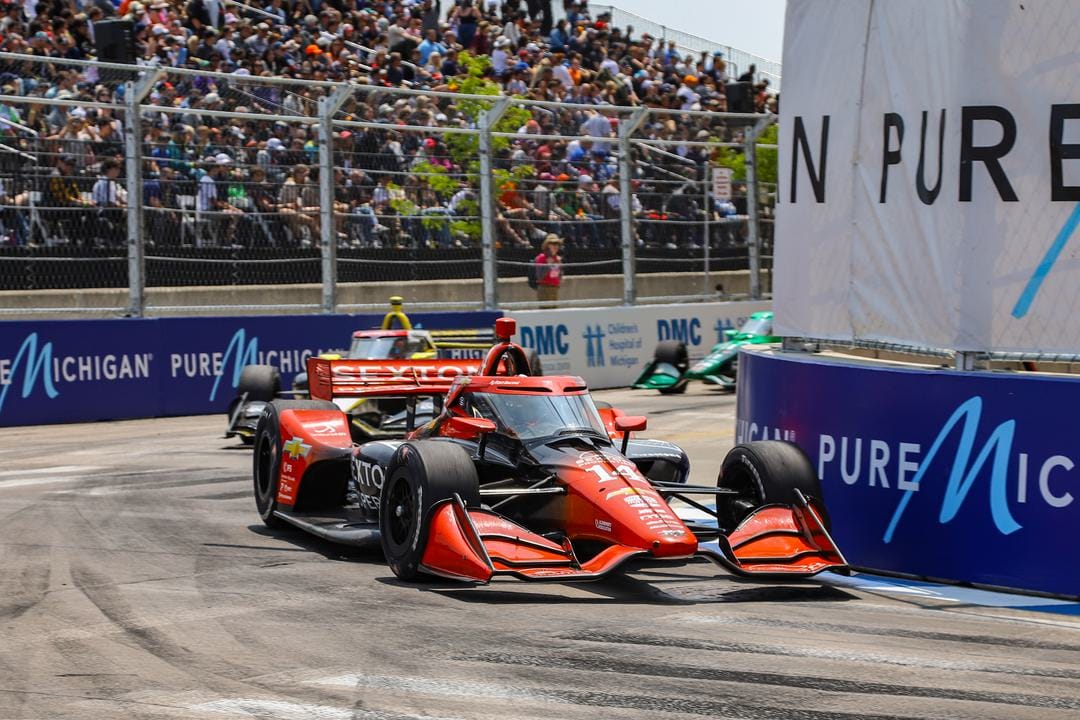
However, that hasn't come with poor tyre management as you might expect. You simply don't come from the likes of 18th to third in any IndyCar race if you can't manage the tyre.
Pato O'Ward is a similar example of a driver who likes a loose car but people assume that means he can't look after tyres as well, which is clearly not true,
"He likes a freer car, but if you watch his onboard, he's not necessarily sideways," adds Kolesar, who first worked with Ferrucci while they were both at Rahal in 2021.
"If somebody else drives his car, they will more often than not say it's way too free for them.
"But Santino, his driving style is to let the car do a lot of the turning for him, which is uncomfortable to a lot of drivers, but he feels very comfortable doing.
"Which, with this car, honestly, makes it fairly difficult, because it's a fairly heavy car now and having rotation through the whole corner is kind of the crux of this car, because it's very easy to have this car have tons of rotation, but then you have entry instability and high-speed/low-speed balance issues and stuff like that. So that's what we work on constantly.
"That's what everybody works on, to a certain extent, is trying to get the car to turn without being too sketchy or difficult to drive."
It's clear that Kolesar loves working with this group. It's a tiny engineering team.
One of the reasons he wasn't race engineer for Ferrucci this year initially was that he was tasked with training up CJ Nielsen to replace him as performance engineer.
Michael Armbrester has moved up from his role as Ferrucci's engineer to technical director - a role the team hadn't officially filled after losing Michael Cannon last season - officially stepping up after Detroit with Kolesar joining Ferrucci fully from then on, although he's been playing a vital role supporting Armbrester in the races before.
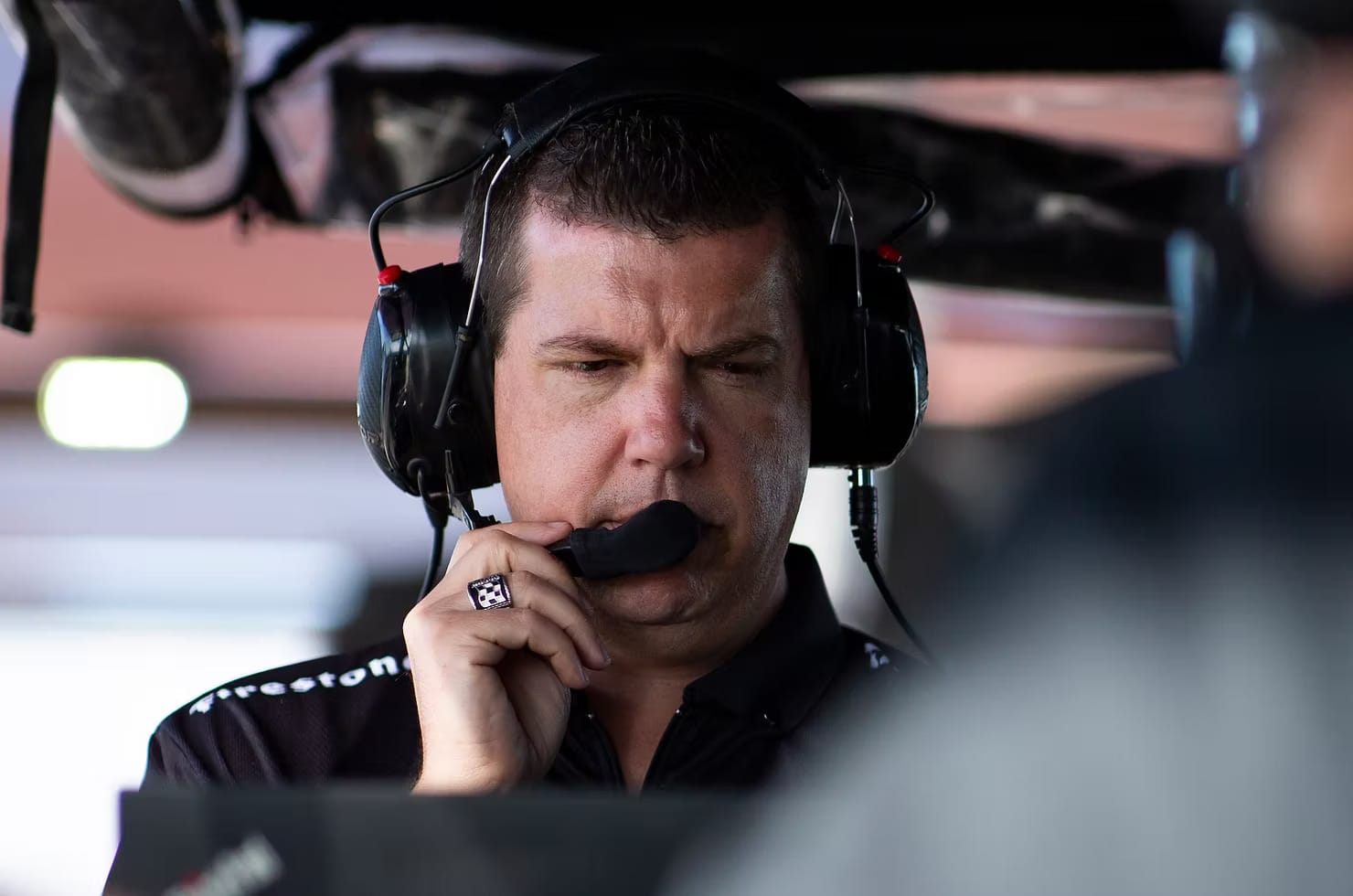
Across Armbrester (pictured above), Kolesar, Nielsen, data acquisition engineer Peter Drummond and Malukas's engineering team (race engineer James Schnabel and performance engineer Collin Hendershot), that's the whole Foyt engineering team!
Yes, this squad has a technical alliance with Penske - and interestingly Kolesar points out that partnership has helped Foyt improve its pitstops recently, which are huge in IndyCar - but having information from Penske and applying it to two different drivers and cars over a race weekend is another thing altogether.
Together with Coyne, this is the smallest team in terms of staff numbers in the paddock, but it continues to punch above its weight over the last few seasons. "People don't realise how small we actually are" adds Kolesar, saying Foyt is even smaller than a team like Juncos Hollinger Racing.
Kolesar has been a big part of that punching above his weight, and it's clear one of the reasons he wanted to come to Foyt was to have that family-style atmosphere where he felt he could grow and make a difference.
He's also patiently waited for the lead engineer role, and even spent a huge chunk of his time training up Nielsen, so that there wouldn't be a void when he did make the step up.
The team's size means Kolesar has to work across a range of areas that bigger teams would have dedicated people for, but that suits him.
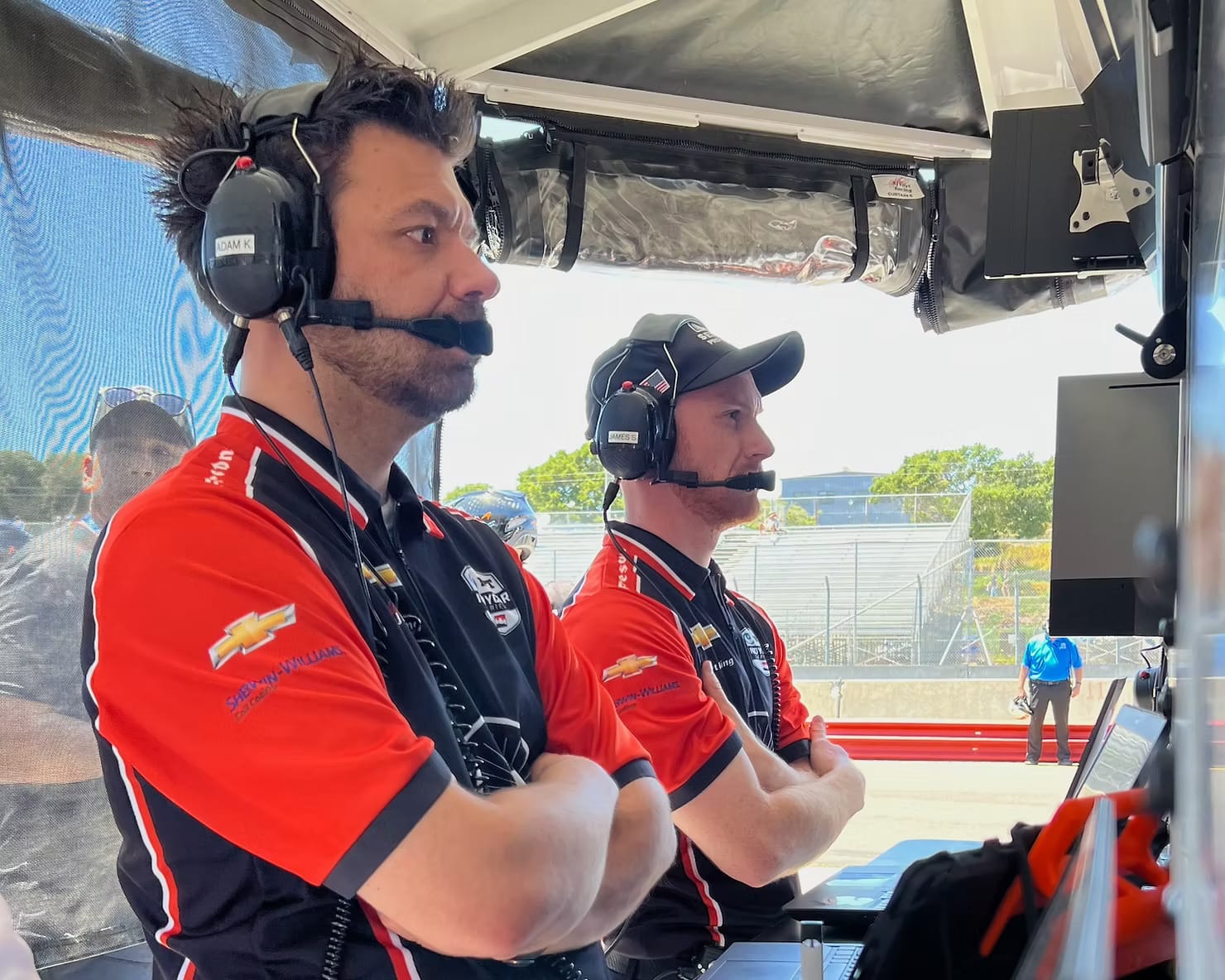
"I definitely find it very fulfilling to be - even though it's a bit more stressful and can be frustrating at times - kind of involved in every aspect of stuff, from dealing with simple parts and procedures with mechanics to make sure stuff is right, or to decide downforce trim for Indy qualifying," he adds.
"It definitely keeps you busy."
The big target for this team is to improve its qualifying, as there's no way the difference between average start and finish is sustainable for the rest of the season.
The good news is, Ferrucci's average finish on the tracks remaining this year was 8.67 last year, and if you discount the Toronto race where he was caught up in that scary crash where he ended up upside down, that improves to 7.25.
He also had the pole at Portland, another track that's coming up.
Honestly, we thought it was ridiculous when Ferrucci said he felt Foyt could fight for the championship this year, and still do. But that doesn't take away from the fact that what this team has been doing relative to its size and resources the last couple of years is absolutely incredible.
Praise duly given.



